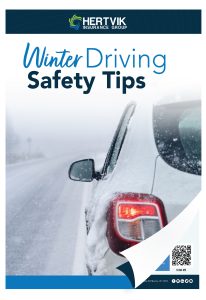Winter Driving Safety Tips
When the winter weather starts to set in, it’s a good time to review these winter driving safety tips:
Prep Your Car
Before any snow, make sure your car is prepped and ready for winter:
Tires: Fill up the air in your tires and check them periodically throughout the winter. If they are over-or under-inflated, they won’t grip the road properly. You can easily check your tire pressure at a free tire air pump found at your local gas station or car shop.
Oil & Antifreeze: Change your oil and antifreeze. Regular maintenance to your vehicle can help prevent any car troubles during winter driving.
Wiper Blades: Before winter starts, get new wipers that are specially designed for winter. The ice and snow in winter will damage regular wiper blades much faster than those manufactured to withstand cold temperatures and frozen windshields.
Driving in Icy Conditions
If you’re driving in the snow, take extra precautions. If you can, start your car early and turn the heat and defrosters on. Then get out and scrape the snow and ice off all the headlights, taillights, mirrors, and windows. Next, remove the snow from the roof of your car and hood to maintain visibility.
Distance Yourself from Others
As you’re driving, keep a larger distance than usual between your car and the car in front of you. In the case that you are breaking, and your car starts sliding, the extra distance will help prevent an accident.
Pump the Breaks
It’s important to know what type of breaks your car has. If it doesn’t have an anti-lock break system (ABS), you need to pump the breaks in order to stop on ice or snow. If you do have ABS, break as your normally would. If you pump the breaks when you have ABS, it will disengage the ABS system. In all cases, try to avoid slamming on the breaks, even if the weather is good
Driving on Ice
Hitting a patch of ice or driving too fast for road conditions can send you spinning. Even when driving carefully, it can happen during a turn or if you are trying to avoid hitting something. If you find yourself in a slide, turn your steering wheel in the opposite direction. (Example: If sliding to the left, turn your steering wheel to the left).
Don’t Use Cruise Control
Lastly, don’t use cruise control. It is dangerous to use cruise control in the snow, ice, or even rain because it can cause hydroplanes or skids. If this happens, you will most likely lose control of your vehicle because you are still driving at a constant speed while the ice/water/snow is accelerating the spinning of your wheels.
 FREE Winter Driving Safety Tips Guide
FREE Winter Driving Safety Tips Guide
Download FREE Winter Driving Safety Tips Guide
Additional Resources:
